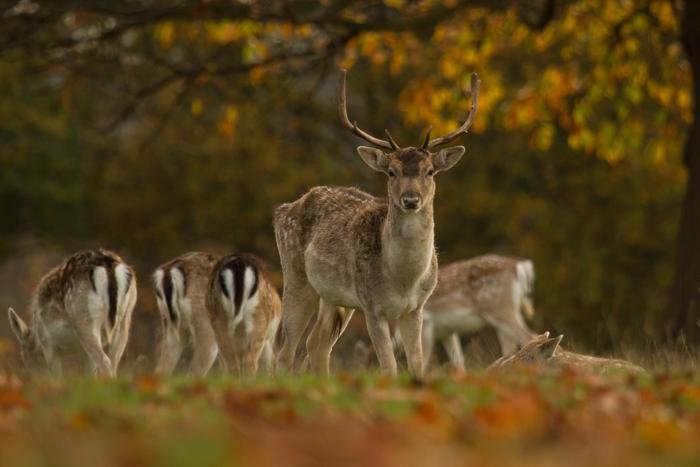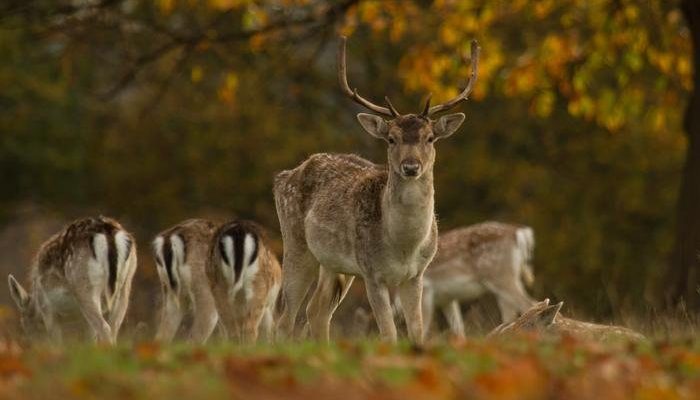
The fallow deer, known for its distinctive, mottled coat and beautiful antlers, has a rich evolutionary tale. Imagine their ancestors roaming the ancient landscapes of Europe and Asia, evolving in response to changing climates, predators, and vegetation. This story isn’t just about the deer themselves; it’s about the intricate web of life they share with their ecosystem. From their origins to their adaptation in modern times, the fallow deer has a history that’s as captivating as it is complex.
The Origins of the Fallow Deer
The story of the fallow deer begins much earlier than you might think. These deer are part of the *Cervidae* family, which has been around for about 30 million years. Their lineage splits off from other deer species roughly 2 to 3 million years ago, during the Pleistocene era. At this time, Europe was a vast area of diverse habitats, from dense forests to sprawling grasslands.
Fossil evidence suggests that fallow deer originated in the Middle East before spreading into Europe. It’s fascinating to think about how these animals adapted to various climates. As we examine their fossils, we can see how their physical features evolved to meet the needs of different environments. Those adaptations are what make them survive and thrive in both temperate forests and open fields.
Physical Characteristics and Adaptations
One of the most striking things about fallow deer is their appearance. They have a unique coat that can range from a rich chocolate brown to a lighter, sandy color, often with white spots. These patterns are not just for show; they serve a purpose. The spots help them blend into the dappled light of the forest floor, making it harder for predators to spot them.
Additionally, their antlers, which can grow up to 90 centimeters long, are another fascinating aspect of their evolution. Antler growth is influenced by their diet and environment. Fallow deer are browsers, meaning they eat a variety of plants. A diet rich in calcium and phosphorus contributes to stronger antler development, which plays a crucial role in mating displays and social hierarchies among males.
Geographical Distribution and Migration
As fallow deer migrated from their origins, they adapted to a range of environments across Europe and Asia. Initially, they thrived in Italy, but their populations expanded dramatically after being introduced to Britain and other parts of Europe. It’s interesting to note that they were brought to England by the Normans in the 12th century, perhaps to serve as game for nobles.
Their adaptability is remarkable. Fallow deer can thrive in various habitats, from woodlands to grasslands, as long as there is enough vegetation for food. Modern urban areas have also seen their populations grow, proving just how well they can adjust to human-altered environments.
Interaction with Other Species
Throughout their evolutionary history, fallow deer have interacted with numerous other species, both prey and predator. Large predators like wolves and bears once posed significant threats to their survival. However, as these predators dwindled in number, fallow deer found themselves in a safer environment, allowing their populations to flourish.
But interactions haven’t always been harmonious. As humans encroached on their habitats, fallow deer faced new challenges. They’ve adapted to coexist with human developments, often grazing in parks and gardens. This adaptability showcases their resilience, but it also raises questions about sustainability and wildlife management.
Conservation and Modern Challenges
Today, fallow deer populations face various modern challenges. While they are not currently endangered, habitat loss and overpopulation in certain areas present ongoing concerns. As deer populations grow, they can lead to overgrazing, which in turn affects the plant life and other animal species within the ecosystem.
Conservation efforts are crucial for maintaining a balanced ecosystem. Not only do these efforts protect the fallow deer, but they also ensure that their habitats remain vibrant and healthy. Understanding their evolutionary history helps us appreciate the importance of these initiatives.
In wrapping up our exploration of the evolutionary history of the fallow deer, it’s clear they are more than just beautiful creatures in our woods. Their adaptability, resilience, and historical journey reflect a broader narrative about life on Earth and how species evolve in a constantly changing world.
So, the next time you spot a fallow deer grazing in a park or a forest, take a moment to appreciate the rich story behind them. They’re not just animals; they’re a testament to survival against the odds, evolving through time and space. In a way, they remind us that every creature has a history worth knowing, and by understanding it, we can work towards a more balanced coexistence with the natural world.

